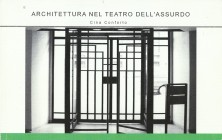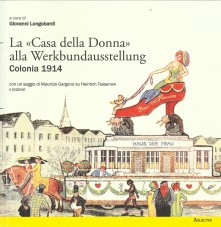(ITA – ENG)
FORMATO A TEMA – Collana Editoriale – Book Series 
| Comitato di redazione | Paolo Balmas, Federica Dal Falco, Carlo Laurenti, Carlo Severati |
EFTD, Formato a Tema digitale
Collana Editoriale di Embrice 2030 pubblicata da Ermes Edizioni Scientifiche
La Collana è dedicata alla diffusione di un pensiero che lavora sulla materia, seguendo una logica sistemica. Questo approccio amplia l’area comunemente definita scientifica, includendo ogni attività che ad esso rigorosamente si attenga. Anche Artigianato, Design, Arte e Architettura, temi attorno ai quali si costruiscono contributi e occasioni espositive (di scrittori, artisti, artigiani, fotografi, grafici, copywriter, architetti). A questi si aggiungono soggetti random raccolti worldwide, coerenti con un pensiero guida rivolto alla salvaguardia ambientale e alla sostenibilità che, autonomamente nel mondo, o attorno al piccolo spazio della APS “Embrice 2030”, nasce ed evolve.
La tegola – roofing tile –nasce, con varie fogge e finiture, in molte aree alluvionali (cinesi, pakistane, babilonesi ed egiziane) per la copertura di uno spazio abitativo o rituale. Fra le varie forme e nomi assunti nelle civiltà monumentali, in Persia sofal, in Grecia solenes, in Cina wumianwa e nei territori etruschi, un tipo piatto, trapezoidale, arriva nell’italiano corrente come “embrice”; dall’uso che anche i Romani ne faranno a protezione della imber, pioggia. La Collana a direzione collegiale «EFTD, Formato a Tema digitale» di Ermes Editrice costituisce uno spazio editoriale aperto e protetto fatto di libri-catalogo con codice ISBN: più formati adatti ciascuno a contenuti sempre rinnovati. Al temine “embrice” già si riferiscono, dal 2007, centenario del Werkbund, l’apertura di uno spazio in rete – www.embrice2030.com – e di un luogo fisico (Roma Garbatella), sedi di una nuova piccola realtà socioculturale multicolore, il colore preferito da Gropius ad Harvard. All’Arte e all’Architettura, temi attorno ai quali sono stati costruiti contributi e occasioni espositive (di artisti, artigiani, fotografi, grafici, copywriter, architetti), si aggiungono oggi soggetti random, raccolti worldwide, coerenti con un pensiero guida rivolto alla salvaguardia ambientale e alla sostenibilità che, attorno alla APS “Embrice 2030” , nasce ed evolve.
EFTD, Digital Theme-Format
The Embrice 2030 Book Series published by Ermes Edizioni Scientifiche
Formato a Tema Digitale wants to contribute to a thinking that works on matter as physical substance in general, following a systemic logic. According to this approach, the area commonly defined as scientific is widened to encompass all activities that are relevant to it. Therefore, besides the activities recognizable by a well-established scientific status, Craftsmanship, Design, Art and Architecture are included. Around these themes revolve initiatives, exhibitions, workshops (involving writers, artists, artisans, photographers, graphic designers, copywriters, and architects) in collaboration with Cultural Institutes, Foundations, and Universities. Random subjects are also gathered worldwide as long as they fit in the framework of a thinking focused on preservation of the environment and sustainability – a thinking that, either out there in the world or within the small Embrice 2030 gallery, consistently evolves.
The roofing tile in its variety of forms and finishing originated in many alluvial areas of China, Pakistan, Babylonia, and Egypt. It could be used to cover either domestic or ritual spaces.
To be found under different forms and names in the monumental civilizations of Persia (sofal), Greece (solenes), and China (wumianwa) as well as in the Etruscan territories, a plane, trapezoidal tile appeared in the current Italian language as embrice after the use Romans had made of it, in order to protect things and people from imber, rain.
The book series “Embrice Formato A Tema Digitale” (Digital Theme-format Series), published by Aracne and directed collectively, offers an editorial space, as open and protected as our titular plane roofing tile. ISBN-numbered books/catalogues make up a collection in which each book’s format varies according to the content.
Since 2007 – Werkbund Centennial – two events have referred to the term embrice: the opening of a space in the world wide web – www.embrice2030.com – and of a physical place in the Garbatella district of Rome, both locations for a new small social and cultural reality that is also multi-coloured (Gropius’ favourite colour at Harvard). Artists, artisans, photographers, copywriters, and architects have contributed to creating events and exhibitions on issues of Arts and Sustainable Architecture. Today, random subjects gathered worldwide are joining them under the guidance of the thinking focused on the preservation and sustainability of the environment that originates in evolves from the association for social advancement “Embrice 2030”.

001 BSR, Battaglia di San Romano. Mostra. Federica Dal Falco presenta un lavoro in tre film sui tre quadri di Paolo Uccello che rappresentano tre fasi della Battaglia. 001 ARACNE, 2012. Exhibition. Federica Dal Falco presents three films on three paintings by Paolo Uccello representing three phases of his Battle. 001 ARACNE, 2012, 27 pp., 8 ill., 13,5×21 cm

002 La Forma Violata, Saggio; Alessandra Nizzi e Marco Giunta presentano un rilievo della condizione della Casa delle Armi al Foro Italico dopo la sua funzione di Aula Bunker con una serie di notazioni sul progetto originale di Luigi Moretti. Essay. Alessandra Nizzi and Marco Giunta present a survey of the condition of the Casa delle Armi at the Foro Italico, Rome, after having been used as a bunker. With a series of annotations about the original project by Luigi Moretti. 002 ARACNE, 2014, 290 pp., 225 ill., 17×24 cm

003 Lettini, Mostra. Tommaso Franchi presenta una serie di piccoli modelli inquietanti in una serie di ambientazioni naturalistiche. Exhibition. Tommaso Franchi presents an array of disturbing tiny bed models in a succession of naturalistic settings. 003 ARACNE, II, 2014, 32 pp., 26 ill., 21×13,5 cm

004 Casa Alessandrini, Mostra; L’Architetto Massimo Alessandrini, collezionista di residui di plastica levigati dal mare, ai quali dedica un’intera stanza del suo alloggio collocato in uno dei primi edifici residenziali di Roma Capitale. Exhibition. Architect Massimo Alessandrini, a collector of plastic residues smoothed by the sea, exhibits them in an ad-hoc room of his home, one of the first residential buildings in the then new capital of Italy, Rome. 004 ARACNE, II, 2014, 34 pp., 30 ill., 21×13,5 cm

005 Architettura nel Teatro dell’Assurdo, Saggio. Maria Letizia Conforto presenta l’Architettura come acqua, fuoco e terra sulla base delle sue esperienze dirette sui monumenti classici. Essay. Maria Letizia Conforto presents Architecture as water, fire, and earth based on her own experience working on classic monuments. 005 ARACNE, 2013, 98 pp., 111 ill., 21×13,5 cm

006 Sulle tracce dei Macassan, Racconto; Andrea Severati e Grant, incaricati di una missione di ricerca ittica in una piccola isola del Golfo di Carpentara, Australia settentrionale, si imbattono in nativi che pescano senza rete, con l’aiuto delle maree, e “non hanno nulla ma sono felici”. Short Story. Andrea Severati and Grant conduct an ichthyic research mission in a small island of the Gulf of Carpentaria, Northern Australia. They meet natives who fish without nets, just with the help of the tides, and “don’t own anything but are happy.” 006 ARACNE, 2013, 54 pp., 12 ill., 13,5×21 cm

007 Atlante degli animali incogniti e rari, Mostra; Giorgio Bertolini, Architetto e scenografo recentemente scomparso, presenta il suo incompiuto Atlante con disegni di animali fantastici con acuti riferimenti letterari. Exhibition. The author of this unfinished Atlas of drawings of imaginary animals with acute literary references is Giorgio Bertolini, an architect and production designer who has died recently. 007 ARACNE, 2014, 47 pp., 20 ill., 17×24 cm, + 1 DVD

008 Artisti d’Avanguardia alla Werkbundausstellung di Colonia del 1914: approfondimenti e rivisitazioni, Workshop; Vittorio Giusepponi e Paolo Balmas presentano schede sul lavoro giovanile di importanti artisti, da Schlemmer a Schmidt-Rotluff, e le interpretazioni di gruppi di studenti del Licei Artistici e delle cuole d’Arte di Roma. Workshop. Vittorio Giusepponi and Paolo Balmas discuss the early work of important artists such as Schlemmer and Schmidt-Rotluff along with interpretations of students groups from Roman ‘art lyceums’ and art schools. 008 ARACNE, 2015, 63 pp., 96 ill., 21,5×27 cm

009 Haus der Frau, La “casa della donna” alla Werkbundausstellung. Colonia 1914. Workshop; Giovanni Longobardi e il suo gruppo di ricerca ricostruiscono su base documentaria l’edificio “ delle donne” alla Esposizione del Werkbund del 1914 a Colonia. Workshop. Giovanni Longobardi and his research group reconstruct the “house of women” at the 1914 Werkbund in Cologne departing from original documents. 009 ARACNE, 2015, 88 pp., 77 ill., 21×21 cm

010 Valentina Ricciuti Architetto, Mostra; sono in mostra Documenti (disegni, interviste, modelli, opere di una Architetto recentemente scomparsa che, malgrado giovanissima, ha esercitato una sensibile influenza sull’ambiente architettonico romano. Exhibition. The works – including drawings, interviews, and models – of a very young architect who has suddenly left us. In her short span of life, she was able to influence decisively the Roman architectural milieu. Nuova Serie ERMES, 2015, 74 pp., 156 ill., 24,5×14,5 cm, + 1 DVD

011 Design come esercizio per il futuro: Werkbund 1914-2014, Workshop; Federica Dal Falco presenta i risultati di specifici approfondimenti delle tematiche dell’Esposizione del 1914, in relazione ai temi del design e della comunicazione. Workshop. Federica Dal Falco presents the outcome of further research on the 1914 Exposition with reference to the themes of design and communication. Nuova Serie 001 ERMES, 2016, 55 pp., 58 ill., 21×14 cm

012 Visitatori, Catalogo; Federica Dal Falco presenta il suo lavoro d’artista nel quale sempre dedicato attenzione al tema della superficie, sia che si tratti di epidermidi, che di tessuti, che di oggetti tecnologici. Catalogue. Federica Dal Falco presents her artist’s work, constantly focused on the theme of the surface, whether it deals with epidermis, fabrics, or technological objects. Nuova Serie 002 ERMES, 2016, 141 pp., 130 ill., 16,5×24 cm

013 Roma Public Toilet, Raccolta di saggi; il tema viene affrontato Da Maria Spina, curatrice , e da altri autori, anzitutto sul piano culturale, partendo dalla sua diffusa presenza del tema nella letteratura internazionale, da Ariosto a Marquez; viene poi svolto nei suoi aspetti tecnici, relazionali e territoriali. Collection of essays. The curator Maria Spina, along with the other authors, privileges a cultural approach to this problem, including a discussion of the presence of the toilet throughout international literature from Ariosto to Marquez. The book also touches on technical, relational, and territorial aspects. FTD, Formato a Tema Digitale, 013 ERMES, 2016, 93 pp., 70 ill., 15×21 cm (primo volume cartaceo e digitale/both digital and in print)

014 Paolo Meluzzi e il dibattito internazionale low rise high density, Catalogo
L’Architetto Paolo Meluzzi (1940-2005) ha operato ad ampio raggio, dallo Yacht Club di Porto Cervo a numerose residenze low-cost, high-density e low-rise, collegando impegno professionale e ricerca. Catalogue Architect Paolo Meluzzi (1940-2005) worked on a wide range of building projects, from the Porto Cervo Yacht Club to several low-cost, high-density, low-rise housing estates, always combining professional commitment and research.
